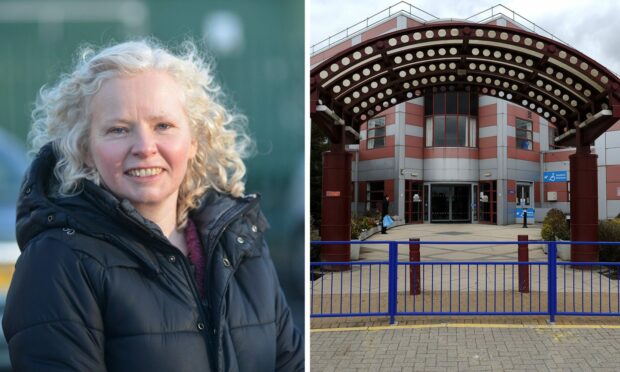Fifers have been urged to join a campaign to save Queen Margaret Hospice in Dunfermline.
Labour MSP Claire Baker has launched an online petition, amid fears the service is earmarked for permanent closure.
Health chiefs are reviewing the future of palliative care in the region as more people opt to be looked after at home.
But they insist no final decision has been taken.
However, the Dunfermline hospice is currently closed and Mrs Baker is concerned it may never reopen.
She has now called on people to support the bid to reopen it and highlight why it is so important.
Need to ensure all patients have a choice
Mrs Baker has the support of Markinch woman Mary Green, who was struggling to cope with husband Ralph’s care at home before he was admitted to the Dunfermline hospice last year.
The MSP said: “It is vital that we retain specialised care which supports people in end-of-life situations across the region.
“While some people want to be cared for at home, that’s not an option for everybody.
“We need to ensure all patients have a choice about where end-of-life care is delivered.
“Palliative care should be delivered as locally as possible.
“But it will be very difficult for a lot of people in west Fife to travel to and from Kirkcaldy, especially when they have a loved one who is dying.”
‘No transparency’ over Dunfermline hospice future
The Mid Scotland and Fife MSP has been calling for assurances on the hospice at Queen Margaret Hospital since 2020, when it was closed at the start of Covid.
NHS Fife said at that time the move was temporary to protect vulnerable patients from the effects of the virus.
But it has never reopened, other than for a short period while Victoria Hospice in Kirkcaldy was being refurbished.
Mrs Baker said: “When I wrote to NHS Fife at the end of January they gave no indication of the imminent plan to close it.
“The lack of transparency around its closure is completely unacceptable
“I am calling on NHS Fife to reopen the hospice at Queen Margaret and to commit to keeping it open so that families caring for their loved ones can continue to be offered end-of-life care in a setting that works for them.”













Conversation